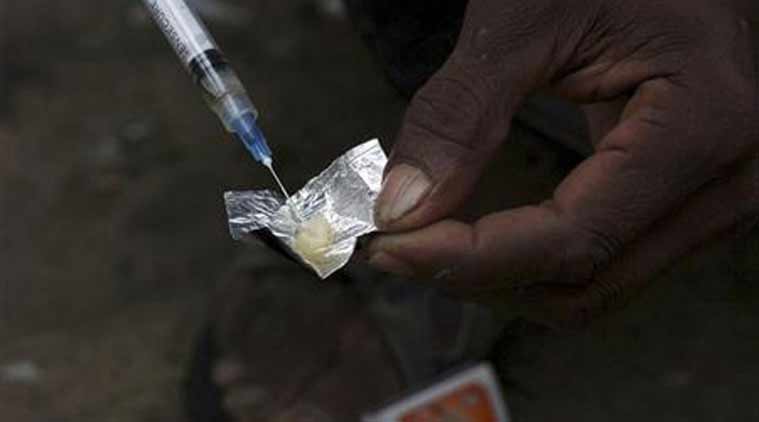Opinion A state in freefall
From the contaminated Sutlej waters to farmer suicides and drug abuse by youth — Punjab is home to building crises.

 Widespread drug addiction, farmers committing suicide in alarming numbers, disappearing factories and rampant corruption are recurring themes in Punjab.30
Widespread drug addiction, farmers committing suicide in alarming numbers, disappearing factories and rampant corruption are recurring themes in Punjab.30
What was the image that Punjab once evoked? Prosperous farmers in fields lush with wheat? The land of fertile soil, blessed with five rivers? Big, hearty people with an equally big, hearty zest for life? But not anymore. Today, Punjab is a state deep in depression.
Arvind Kejriwal recently visited Punjab along with other AAP members. Nothing could have prepared us for the extent of the tragedy that presented itself. Widespread drug addiction, farmers committing suicide in alarming numbers, disappearing factories and rampant corruption were recurring themes as we travelled from villages to towns to big cities.
It was shocking to visit Teja Rohela and Dona Nanka in Fazilka district on the border with Pakistan, and see so many young children suffering from physical deformities and mental health issues. Children with deformed limbs, grey hair and outgrown heads were devastatingly common. The contamination of Sutlej waters with lead, uranium and other heavy metals, and the link to serious health issues, has been known for years. The government has not kept its promise of cleaning the water. The entire belt of Fazilka has very few government hospitals. Even where they do exist, doctors and medicines are often missing.
The farmers who were once at the vanguard of the Green Revolution are today committing suicide in alarming numbers. In a village in Dirba in Sangrur district, we met a woman, Baldev Kaur, who had lost her grandson, son, husband and brother-in-law to suicide between 2000-11. There is only one male member of the family left who has turned, in grief and hopelessness, to alcohol. Despite selling five acres of land, leaving the family with three acres to survive, they still owe Rs 15 lakh to banks and arhtiyas (commission agents).
Satgur Singh, 38, and his wife Rani Kaur, 35, of village Mauran, Sangrur district, committed suicide in May 2015 after they failed to repay a loan of Rs 60,000 taken for medical treatment from a local moneylender. A lack of facilities in government hospitals has left the poor to the vagaries of private medical care. Farmers are borrowing not only for crop requirements but also to meet day-to-day needs. The government claims to provide Rs 3 lakh of compensation to families of farmers who commit suicide. But Satgur Singh’s parents say that they have received only Rs 30,000 from the Red Cross, nothing from the government.
In 2015 alone, there were 449 farmer suicides. Only Maharashtra reported more. A study by Punjabi University, Patiala, shows that farmers in Punjab are in Rs 70,000 crore of debt. Nearly 82 per cent of this is owed to banks and other financial institutions. Can the government not help with restructuring these debts to offer more feasible repayment schedules?
We met small and marginal farmers who spoke of the problem of depleting groundwater. Every few years, they had to take loans to bore deeper to draw water for irrigation. What has been done to extend the coverage of canal irrigation and recharge groundwater? We don’t know. With elections around the corner, the farce of SYL legislation is being played out to divert attention from decades of inaction and misrule.
Faced with gloomy prospects at home, many youth sell what little they own to pay traffickers to smuggle them into Europe, the US or Canada. Doaba is home to a flourishing trade in human trafficking.
Even in rural areas, people used the world “mafia” to define the prevailing lawlessness. They said there were mafias all around — drug, liquor, cable, mining, transport, and so on. Drug abuse has left hundreds of families without fathers and husbands and sons. In Sur Singh village in Pitti district, 62-year-old Bhajan Kaur had three sons — Gursewak Singh, Gurmail Singh and Gurmeet Singh. All three died of drug overdoses. At Pahuwind in Tarn Taran, we met 30 families who had lost one or more male member to drugs.
Reports allege the involvement of police and BSF personnel, government doctors and even a senior minister in the lucrative drug trade. A study by AIIMS in January found that opioids worth Rs 7,500 crore are consumed in Punjab every year, of which heroin accounts for Rs 6,500 crore, and that users are spending Rs 20 crore daily on drugs. The AIIMS data shows that 80 per cent of addicts have tried to quit, but only 35 per cent have received any help. Addicted to heroin, men are selling land and livestock to feed their addiction, their families forced to live in makeshift shelters.
In Rauke Kalan, Moga district, Inderjeet Singh, 25, became an addict at the age of 18. He sold his land and house to pay for his addiction. His neighbour, Kuldeep Singh, 35, father of four daughters, sold his house and 24 goats to buy heroin. In the same village, we came across a group of 10 young men that, with the help of about Rs 2 lakh raised through charity, has managed to rehabilitate 35 addicts. They were treated by a private doctor and are now living normal lives.
The story from Rauke Kalan gives hope. The will to fix their state and solve their problems is intact among people. At meetings in Ludhiana and Mandi Gobindgarh, industrialists exhibited confidence in their ability to revive both their own fortunes and the state’s economy. All that they required, they said, was an honest and enabling system. If Punjab is crying out in pain, it also shows a steely resolve to effect change.




